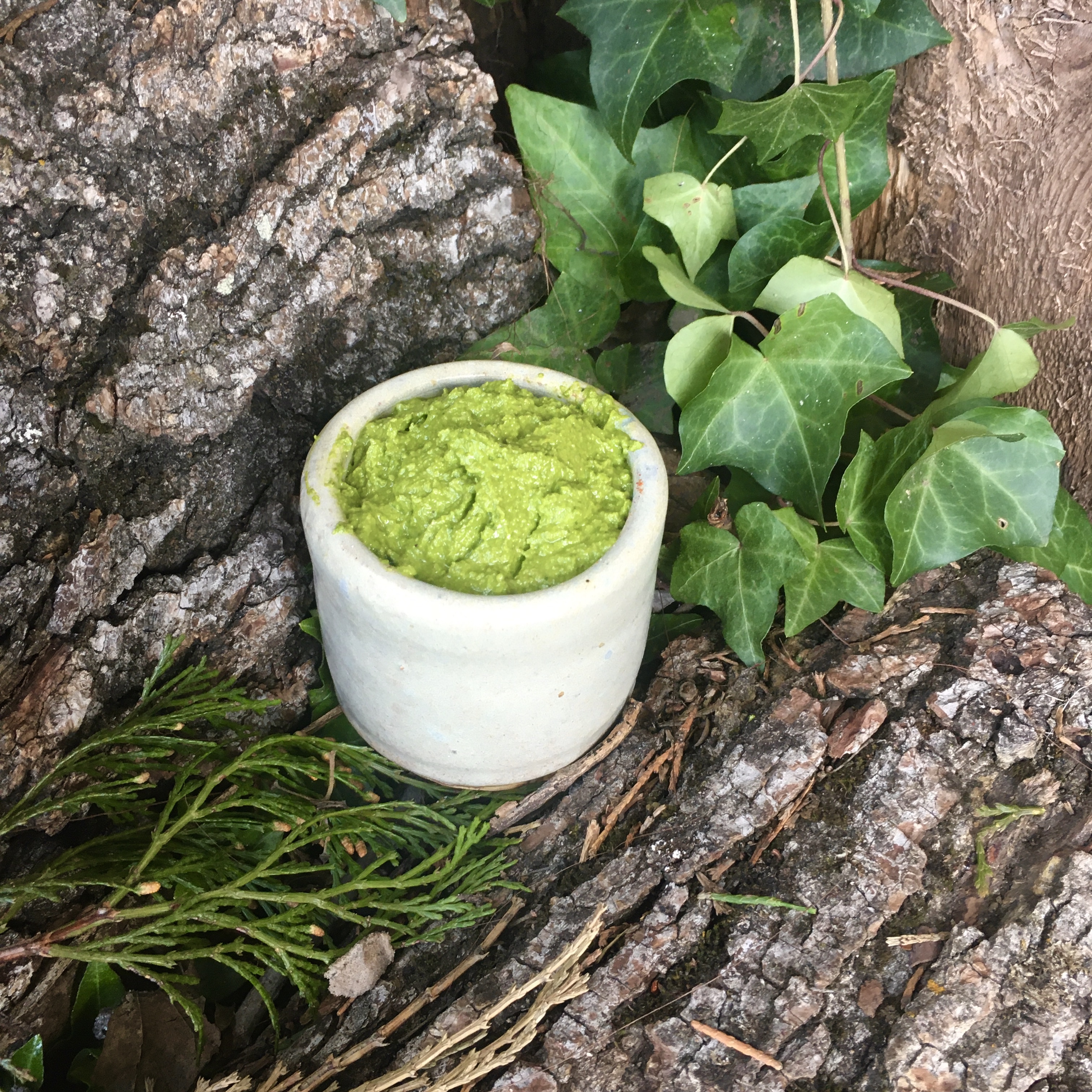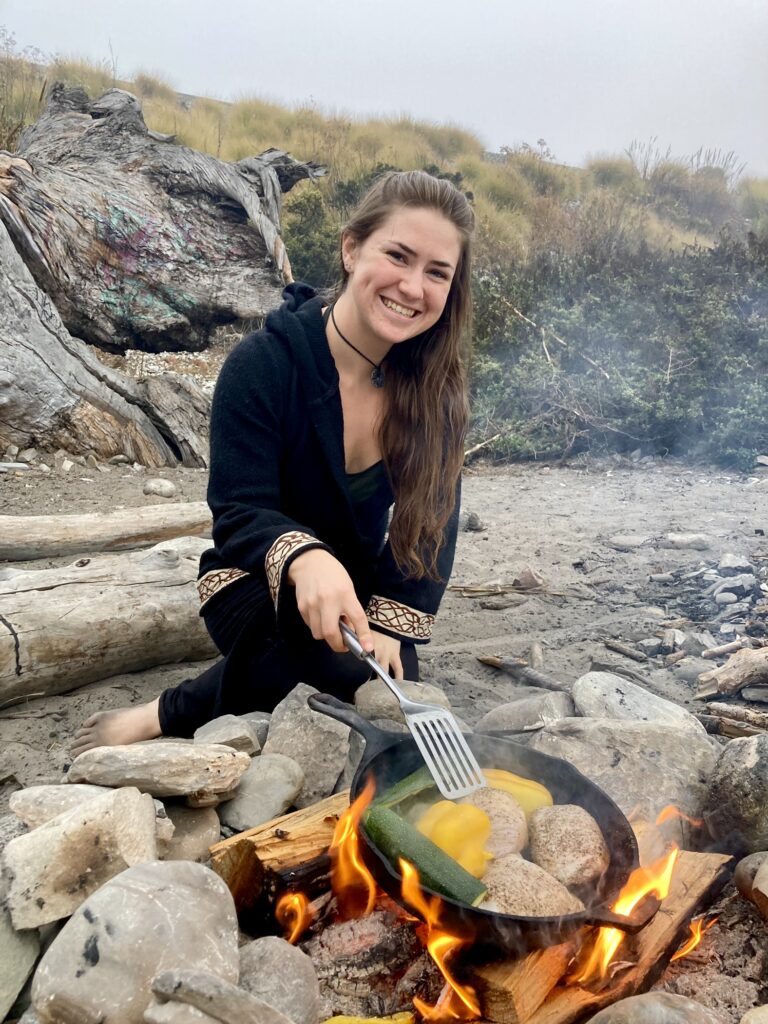Overcome Your Gut + Digestive Issues With Ancestral Nutrition
Homemade Pesto

I can’t think of much to say about pesto, other than it’s an excellent Italian sauce that’s not hard to make. It’s great on veggies, rubbed on chicken, or in a pasta dish. I love making it from scratch so today I am sharing my homemade pesto recipe. I hope you enjoy it as much as I do!
With love, from my kitchen to yours,
Kayley

Homemade Pesto Recipe:
(makes 1 cup)
Bring a pot of water to a boil. Then blanch the basil by adding it to the boiling water. Push the basil under water with a spoon and let it cook for about 15 seconds. Then drain the basil, run it under cold water, and drain again. This blanching process will help keep your pesto from turning brown.
Next toast the walnuts, pecans, or pine nuts. Heat a pan over medium heat and add the nuts. Toast them for about 5-8 minutes, stirring occasionally, till the nuts are lightly browned.
Then combine all ingredients in a food processor or blender and blend. A food processor yields a more traditional coarse pesto while a blender yields a smoother pesto.
Transfer to a jar and store in the fridge for about 1-3 week. (I week is the typical recommendation, but mine always lasts longer). If you want to store it longer, you can freeze it in an ice cube tray then transfer the pesto cubes to a bag or tupperware. This pesto goes great over veggies, rubbed on chicken, or in pasta dishes; but feel free to get creative and use it however you’d like.
Ingredients
Directions
Bring a pot of water to a boil. Then blanch the basil by adding it to the boiling water. Push the basil under water with a spoon and let it cook for about 15 seconds. Then drain the basil, run it under cold water, and drain again. This blanching process will help keep your pesto from turning brown.
Next toast the walnuts, pecans, or pine nuts. Heat a pan over medium heat and add the nuts. Toast them for about 5-8 minutes, stirring occasionally, till the nuts are lightly browned.
Then combine all ingredients in a food processor or blender and blend. A food processor yields a more traditional coarse pesto while a blender yields a smoother pesto.
Transfer to a jar and store in the fridge for about 1-3 week. (I week is the typical recommendation, but mine always lasts longer). If you want to store it longer, you can freeze it in an ice cube tray then transfer the pesto cubes to a bag or tupperware. This pesto goes great over veggies, rubbed on chicken, or in pasta dishes; but feel free to get creative and use it however you’d like.
Notes
Nutrition:
| Ingredients | Cals | Fat | Carbs | Protein |
| 2 cups basil (48g) | 11 | 0.3g | 1.3g | 1.5g |
| 1/4 cup walnut halves (25g) | 163.5 | 16.3g | 3.4g | 3.8g |
| 1/3 cup EVOO | 639.6 | 74.2g | 0g | 0g |
| 1/4 cup parm (20g) | 80 | 8g | 0g | 4g |
| Total (1 cup) | 894.1 | 98.8g | 4.7g | 9.3g |
| 1 tbsp | 55.9 | 6.2g | 0.3g | 0.6g |
Notes:
* Nutrition is based on the products I use. I provide a nutrition table so that you can quickly check to see if your food products match or so that you can easily calculate the nutrition for any changes you want to make to the recipe. I think this helps if you have very specific diet goals and/or fitness and/or health goals. I also wanted you to be able to see exactly where I get the numbers for my nutrition facts so that you can see that they are reliable and learn more about macro breakdowns of food.
Works Cited
1. Calorie King. https://www.calorieking.com/ Accessed 18 May 2020.
2. Nutritionix. Gladson. https://www.nutritionix.com/ Accessed 30 May 2020.
3. Eat This Much. https://www.eatthismuch.com/ Accessed 29 May 2020.

